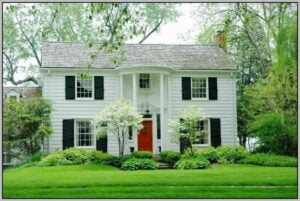Do I Need A Sump Pump?
The answer is…probably. Here in the Midwest, our soil has a heavy component of clay. In addition, we experience all four seasons and temperatures from 0 to 100 degrees. Kansas City averages 39 inches of rain annually and some months can be very wet. We also have long dry periods, and drought is another contributing factor to foundation damage. Any one of those conditions, and certainly all of them combined can contribute to issues in your foundation.
A sump pump is useful in keeping water from building up under your foundation. When it does, it creates “hydrostatic pressure”. If not dealt with that pressure may force moisture into the basement.
A sump pump consists of a round pit, usually 30” deep, dug through the floor of your basement. Inside the pit is a pump, either submerged or on a pedestal. Water under the house is directed and allowed to collect in the pit. When the pit begins to fill, the water level raises a float and at a certain height, that float trips a pump which expels the water out of, and away from the home.
If you are considering buying a home with s sump pump, make sure to inspect it. Pour water into the pit to raise the level of water high enough to start the pump. Once it is running, go outside and look at the outlet (usually made of PVC). Does the water run freely? Does the discharge line extend at least ten or more feet from the house? Does it empty in an area where it can continue to flow away from the house or does it pool and gather near the basement?
SEALED does not install sumps, but many foundation companies and plumbers do. The cost of a pump and installation will run from $1,200 to $2,500. And we would recommend that while you have one installed, you spend a bit more and add a battery backup. If not, you may learn that when the power goes out during an intense storm, you no longer have a working sump pump.


